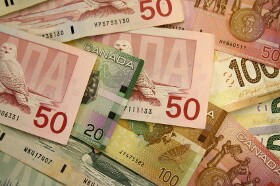Canadian GDP surprised analysts and traders to the downside today, with February GDP declining 0.2%. The news came at the same time that reports of slowing consumer spending and income were reported in the United States. The combination is weighing on the Canadian dollar today, as well as on other currencies.
The drop in Canadian GDP is being blamed, to some extent on oil and mining shutdowns that occurred in Canada. The result was that expectations were missed at the same time producer prices in Canada rose a little more than expected. This combination surprised many, and that led to a drop in the Canadian dollar. The situation in the eurozone is also weighing on risk appetite in general.
Also not helping matters is the disappointing data out of the United States. The Canadian economy relies a great deal on what happens in the United States, and the fact that consumer spending grew less than expected isn’t helping. Even though personal income rose by 0.4% in the United States in March, consumer spending only rose by 0.3% — lower than expected and a marked drop from February. The disappointing news that US consumers are “back” yet is also weighing on the loonie, and helping the US dollar.
At 14:27 GMT USD/CAD is higher at 0.9873, up from the open at 0.9810. GBP/CAD is also higher, rising to 1.6046 from the open at 1.5963.
If you have any questions, comments or opinions regarding the Canadian Dollar,
feel free to post them using the commentary form below.
